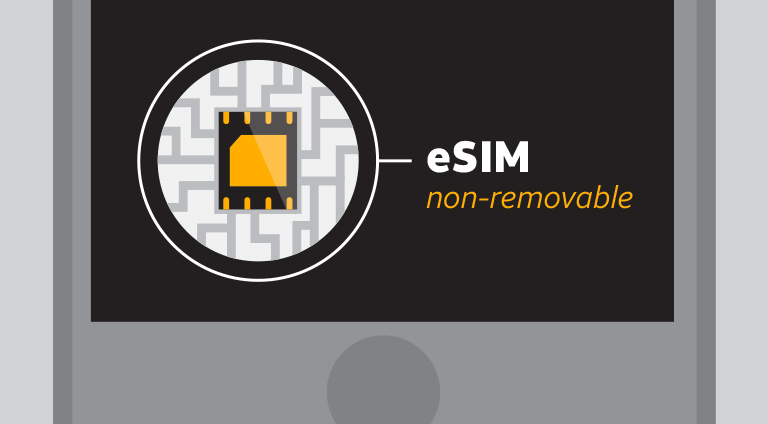Change can be difficult. Especially if you don’t understand the reason or benefit behind the change.
When it comes to “eSIM” replacing SIM cards in mobile phones, the change should make things easier and more secure for consumers.
A SIM card is a small removable chip in your phone that acts as the connector between your device and the mobile network. It stands for “Subscriber Identity Module” and has information about your account and your provider, linking them with your phone.


These physical cards, which can be taken out and replaced or moved to another phone, are being replaced by components placed inside a mobile phone called an eSIM. This is a digital version that performs exactly the same as the physical version, except that instead of the information being on a removable card, it’s downloaded directly to the eSIM in the phone.
What’s in it for me?
When you purchase a phone, your account and carrier information are downloaded to the eSIM in your device as part of the phone setup process. That means no more fumbling with a tiny SIM card when you set up a phone.
- You don’t have to figure out how to pop out the old card.
- You don’t have to worry about losing or breaking the new one before you get it into the phone.
But the real benefits come in how you use and secure your phone.
Transferring an eSIM to a new device can be done much more easily, since it’s all digital. As long as you have both the old phone and the new phone, and access to Wi-Fi, the transfer can be done quickly through the network.
And eSIM technology means some devices may get even smaller – like watches and other wearable devices – because they don’t need a spot to hold the physical card anymore.
What about security?
The strong security measures and policies in place for a SIM card are all the same for eSIM. The online process for initial eSIM configuration or transfer, which requires authentication and is performed digitally, is a more secure process. It helps protect the customer and the device.
Any security updates will be faster and easier through eSIM. Your carrier can simply send an update through the network to your eSIM, rather than having you replace a physical card with new one.
While eSIM will be more secure in many ways, bad guys can still find ways to scam you. Remember, people are often the weakest link and social engineering is a common tactic bad guys use to get your information. Phishing and man-in-the-middle scams are also ways they can get you to share more than you should.
What’s the downside?
If a phone is lost or damaged to the point where it doesn’t work, you’ll need to go through your carrier to transfer the eSIM to a new device. That’s because you won’t have the original device to connect to the network and confirm the activity.
While eSIM may sound like something new, it gives consumers more control over how they use and secure their phones.